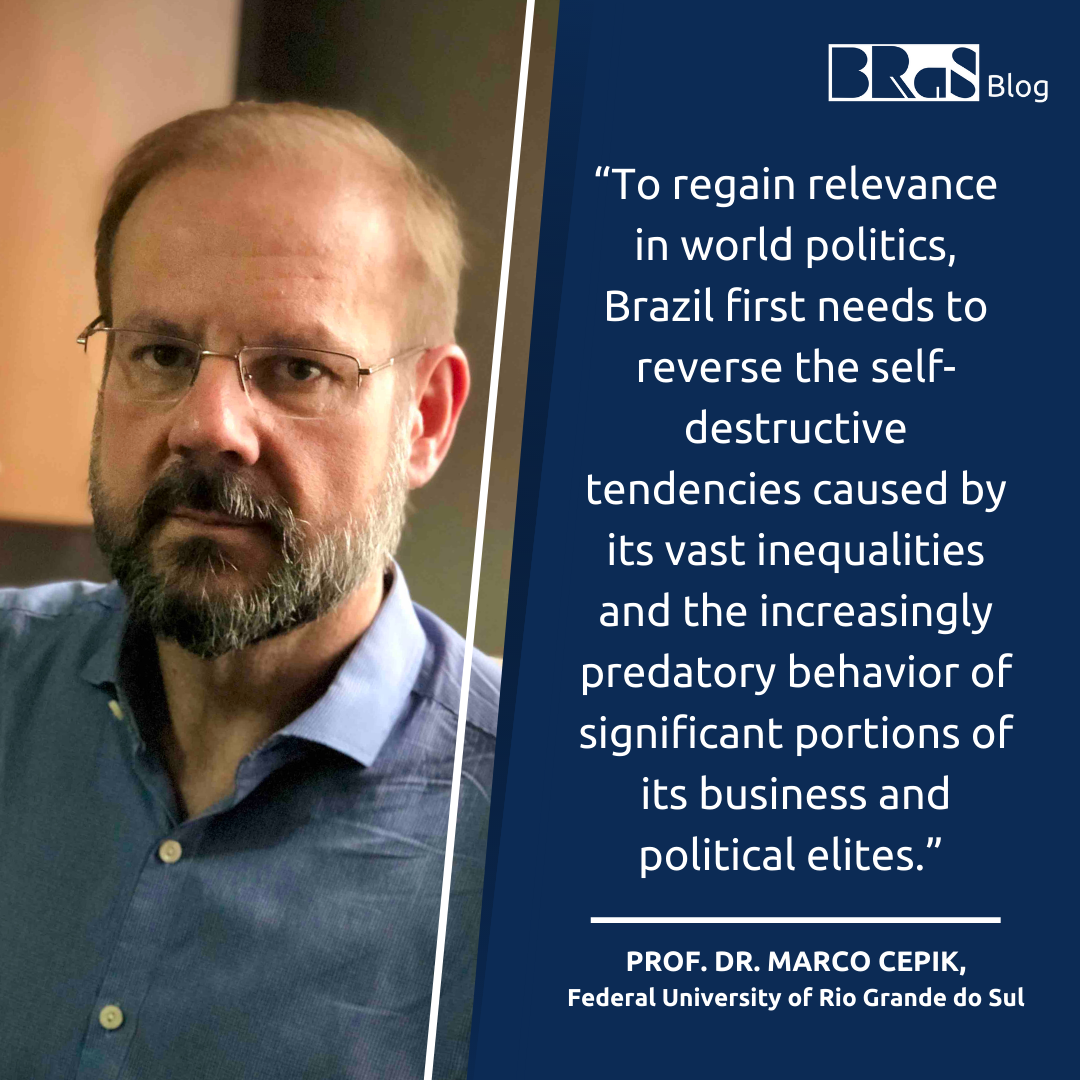by Victor Hugo Barboza
Translated and Reviewed by Matheus Lucas Hebling
Income redistribution is essential to reduce economic inequality and, consequently, to reduce food insecurity. In addition, they ensure the maintenance of children and adolescents in school, the effectiveness of childhood illnesses, and the safety of the health of pregnant women. Over the past twenty years, income transfer programs have been developed in Latin America, with emphasis on those created in Brazil, Colombia, and Uruguay, serving a total of 68 million people in the three countries. However, the recent change in Brazil to the new Auxílio Brasil program represents a setback in the then consolidated advance of the Bolsa Família Program.
Over the last twenty years in Latin America, income transfer programs have been developed, with emphasis on those created in Brazil, Colombia, and Uruguay, serving a total of 68 million people in these three countries. Income distribution programs were fundamental, mainly for the reduction of economic inequality in these three countries, but not only for that. The Bolsa Família (Brazil), Más Familias en Acción (Colombia), and Tarjeta Uruguaya Social (Uruguay) programs were important for these three countries, which had the largest number of people living in poverty in South America, with 34 .1% in Brazil, 39.9% in Uruguay and 40% in Colombia.
| COUNTRIES | PROGRAM NAME | NUMBER OF BENEFICIARIES | % OF THE BENEFITED POPULATION | ANNUAL VALUE INVESTED | % OF GDP | % UNEMPLOYED WHEN THE PROGRAM WAS IMPLEMENTED |
| Brazil | Bolsa Família | 56.3 million | 28.2% | $10.711 billion | 0.47% | 12.3% |
| Brazil | Auxílio Brasil | 14.5 million | 6.8% | US$575.725 million | 0.00002% | 12.6% |
| Colombia | Familias en Accion | 11.5 million | 23.8% | US$852 million | 0.22% | 11.19% |
| Uruguay | Tarjeta Social Uruguaya | 528 thousand | 15.5% | $207 million | 0.37% | 7.83% |
Thus, over 10 years after implementation, these programs were responsible for taking these countries out of a situation of food insecurity, reducing child mortality by about 16%, increasing the height of children in 10 years since the programs started to be implemented and, in the case of Brazil, which has become a showcase for the world in terms of income transfer, the Cadastro Único was created, where it was possible to have several important information for families in vulnerable situations, such as knowing if the beneficiary had already been a victim of domestic violence, to find out if the child is in school through school attendance, to know if the family is receiving medical assistance, and even to find out if where the beneficiary lives were part of the Federal Government’s cistern program or not.
In the case of Uruguay, the Tarjeta Uruguaya Social program was also implemented, with proposals similar to those in Brazil and which showed important figures about the reduction of poverty, hunger, school dropouts, and also the number of people who started to receive medical assistance. An important step in Uruguay’s cash transfer program, which set itself apart from other countries, was the inclusion of transgender people, who can receive the benefit due to their vulnerable condition.
In Colombia, in 2001, Familias en Acción was created. The program is focused on families living in extreme poverty (the others also include the poor), initially, the population displaced by violence (desplazados), and indigenous people. The program was then composed of three separate benefits: nutrition, primary and secondary school (high school). The goal, as with others, is to increase school attendance throughout the cycle and improve early childhood nutrition and health.
The income redistribution programs of the three countries were made with clear technical-scientific criteria and were previously presented where they presented where these programs would act, what were the main objectives of the programs and what were the expected results. In the case of Brazil (Bolsa Família), Colombia, and Uruguay, these plans were similar, with structural policies, specific policies, and local policies, thinking about the integration between the federal government together with states and municipalities. In addition, as shown in the table below, it was thought not only about the redistribution of income, but also how it could solve some educational and health problems, using it as a prerequisite for being a beneficiary.
In the case of Bolsa Família, the main objective was to remove Brazil from the Map of Hunger, a goal that was reached in 2013; The main objective of the Tarjeta Uruguaya Social, together with the Equidad Plan, was to reduce by half the number of people living in poverty in 10 years. They went much further, as in 2006 the number of people living in poverty in Uruguay was 39.9%, rising to 9.4% in 2016; Familias en Acción, in Colombia, had as its main objective in 10 years to reduce the percentage of families living in poverty. The number dropped from 40% of the population living in poverty in 2001 to 28% in 2011.
| PROGRAMS | PROJECT FORMULATION YEAR | PROGRAM NAME | YEAR OF IMPLEMENTATION OF THE PROGRAM | PREREQUISITES TO BE A BENEFICIARY | HOW TO REGISTER |
| Brazil | 2001 | Bolsa Família Program | 2003 | – Being in poverty or extreme poverty;
– Registration in the Single Registry; – School attendance of children and adolescents; – Vaccination card; – Prenatal care for pregnant women; |
– Registration in the Single Registry of the Ministry of Social Development and Fight against Hunger;
– Social visit to investigate the family situation; – Approval of the Single Registry
|
| Brazil | 2021 | Auxílio Brasil | 2021 | – Being in a vulnerable situation | – Register at the Social Assistance Reference Center (CRAS) |
| Colombia | 2001 | Familias en Accion | 2001 | – Being in poverty or extreme poverty;
– Registration in the Single Registry; – School attendance of children and adolescents; – Vaccination card; – Prenatal care for pregnant women; |
– Registration in the Single Registry of the Ministerio del Interior y Justicia ;
– Social visit to investigate the family situation; – Approval of the Single Registry. |
| Uruguay | 2005 | Tarjeta Social Uruguaya | 2006 | – Being in poverty or extreme poverty;
– Registration in the Single Registry; – School attendance of children and adolescents; – Vaccination card; – Prenatal care for pregnant women; – Being a transsexual in a vulnerable situation |
– Registration in the Single Registry of the Ministry of Social Development ;
– Social visit to investigate the family situation; – Approval of the Single Registry |
The New Auxílio Brasil
With the beginning of the pandemic, a fallacious speech by the president of the republic was introduced that Brazil was once again on the UN’s Hunger Map due to the stoppage of activities for a short time in the year 2020. However, Brazil had already returned to the Hunger Map during the Temer administration, in 2017, and it got even worse when the Bolsonaro government froze 2018 the amount related to extreme poverty in Brazil, which removed more than one million families from the Bolsa Família Program, in addition to the extinction of the National Council for Food and Nutritional Security.
In 2021, the Bolsonaro government announced the end of 18 years of the Bolsa Família program to replace a new program called Auxílio Brasil. They are different programs, which do not have any similar characteristics, and the new program is more exclusionary than inclusive, as part of the neoliberal economic logic in which you only need to give cash aid to the person who will soon leave poverty. In addition, the woman moves away from the State, as for her to be able to place a child in a daycare center, she must get a job, and with that, she will earn a voucher to place her child in a private daycare center. In addition to these problems, Auxílio Brasil represents a setback due to the following characteristics:
● There were no economic calculations presented, but only a stipulated value per family without any justification;
● There is no documented project pointing out where the program will act, the objective, and the expected results. In other words, it is not something planned, but just an idea that it was necessary to end a program of previous governments to implement a program of their own;
● No studies explain why this program is better than Bolsa Família, which took Brazil off the Hunger Map and brought several benefits to the population.
As Auxílio Brasil does not have a plan, it is an indication that it may fail, as only the transfer of money is not necessary for the Brazilian population to have a good quality of life and to have access to food, good education, good health care and the minimum rights provided for by the constitution. How much time will we have to rebuild Brazil when all this passes?
Barboza, Victor Hugo. 2021. "Cash transfer programs in Latin America and the setback of Auxílio Brasil". Brazilian Research and Studies Blog. ISSN 2701-4924. Vol. 2 Num. 2. Available at: https://www.bras-center.com/cash-transfer-programs-in-latin-america-and-the-setback-of-auxilio-brasil/, accessed on: July 5, 2025.






